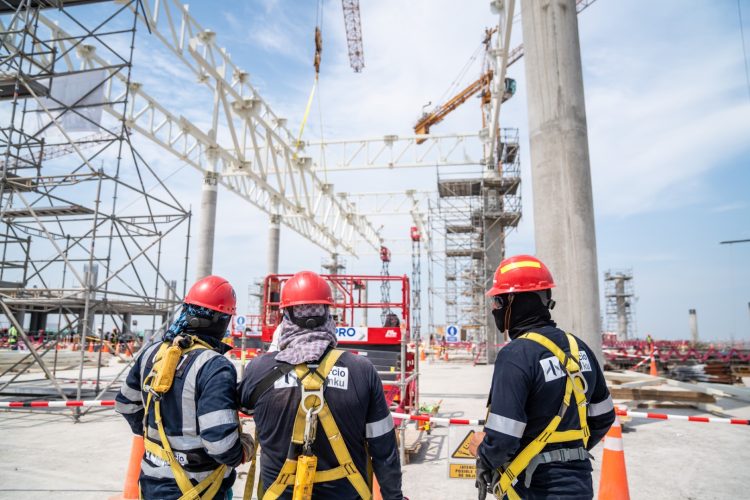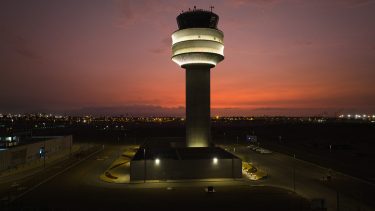Creating the airport city of the future in Lima, Peru
- Like
- Digg
- Del
- Tumblr
- VKontakte
- Buffer
- Love This
- Odnoklassniki
- Meneame
- Blogger
- Amazon
- Yahoo Mail
- Gmail
- AOL
- Newsvine
- HackerNews
- Evernote
- MySpace
- Mail.ru
- Viadeo
- Line
- Comments
- Yummly
- SMS
- Viber
- Telegram
- Subscribe
- Skype
- Facebook Messenger
- Kakao
- LiveJournal
- Yammer
- Edgar
- Fintel
- Mix
- Instapaper
- Copy Link
Posted: 15 July 2024 | International Airport Review | No comments yet
International Airport Review caught up with Paola Loayza Arana, the Real Estate Manager for Lima Airport Partners to gain an update into their exciting developments.


Credit: Lima Airport
Could you please introduce yourself and tell us, how has the development for the airport city been so far? Are there any new projects that you can tell us about?
I am in charge of Lima Airport City Development, it’s the first airport city in South America. We have around 900 hectares of land to develop a mix of asset classes, aeronautical and non-aeronautical business, and contribute it to the Peruvian economy.
We must be ready for the opening day, basically, of the new Jorge Chavez Airport. The hotel, the parking lot, the cargo warehouse, and ground handling area, because when we move the operation to the new terminal, the existing terminal will be decommissioned.
More about new Jorge Chavez Airport:
Read more here: https://www.internationalairportreview.com/article/189065/why-peru-lima-is-south-americas-new-airport-city/
You selected Exolum to implement the LIMFuel project that will facilitate SAF handling. What’s the story there?
LIMFuel project is the design, construction, operation and maintenance of the new aviation fuel system at the Jorge Chávez International Airport. This project involves an investment of more than U.S.$80 million until 2025 for building a new fuel plant as a part of the Airport Expansion Programme.
The new fuel plant was planned since 2018, so we started with Argos Consultancy from the United States. Basically, we study alternatives, looking to see if we need a new fuel farm, or we can do an expansion of the existing fuel farm, or maybe we need to have only a satellite fuel farm. In the end, we chose to build a new one. We then continued working with Argos Consultancy to develop the conceptual design and we started the tender process. Argos recommended some big companies to invite for this tender.
We also visited fuel farms in South America and Central America, in Panama, Colombia, and also in U.S., North America, in order to know how they work. We have received very good interest from international companies around the world. It’s about experimenting with different locations to see what works, because the models are different in Europe and the U.S., and in South America.
How do you work with private companies and stakeholders to realise your vision for airports?
It’s very important to work with the investors and also with the government together. We are a concession and our contract model is an operation contract with some conditions that are not common for investors or different to that they can find outside the airport or in the city. For example, they cannot buy the land, it’s only rent or leasing. But, we offer, for example, permits in order to reduce the risk, cost, timing of the project in order to attract investors.
Lima Airport Partners strives to give back to the communities near Jorge Chávez International Airport through local projects. Why is it important the company contributes meaningful work to local communities?
One of the main sectors for the development of a country is education. We have 46 communities and more than 90,000 people are part of the direct influence area around the airport. So, they can support the development and they can feel part of this progress.
We have other projects in the country like mining, for example, and they always face difficulty because people in the community are often against it, because they don’t feel part of the project and the progress. So, for that reason we are focusing on the communities around the airport.
What do stories like this demonstrate of the company’s commitment to local catchment areas?
The Lima Airport City means contribution in the Peruvian economy. We conducted a study at the end of last year, with APOYO Consultancy, to know how much the Lima Airport City will contribute to the economy in Peru, looking from 2025 until 2030. We have three main impacts, namely the impact in Gross Domestic Product (GDP) contribution, employees and also transfer and taxes for the government. Lima Airport City will contribute around $1,500 million to GDP, which is around 14% of the Callao GDP and around 3.7 times of the Callao tax collection in 2022. Also, we generate 121,000 employees, and it’s also around 14% of the active economy population in Callao – the region in Peru where the airport is located.
Lima Airport City will contribute around $1,500 million to GDP, which is around 14% of the Callao GDP and around 3.7 times of the Callao tax collection in 2022. Also, we generate 121,000 employees, and it’s also around 14% of the active economy population in Callao – the region in Peru where the airport is located.
How will you mitigate the social and environmental impact of your terminal developments in the surrounding areas?
We have implemented a monitoring committee with the neighbours of communities. The results are transparent for all. The consequence of this is an active participation of the communities. We work with issues around noise, with waste management and everything, and we have an open access. They can tell us if they have a problem and we can solve immediately.
Are there any sustainable features of the terminal developments that you could tell us about?
We are working with renewable energy sources, introducing circularity by cutting down on single-use plastic and preserving any archaeological findings and managing this with the Culture Minister. We are currently at level 3 for the Airport Carbon Accreditation. Employing from the local community is considered in the commercial contracts as well, along with support for small companies, such as entrepreneurs.


Credit: Lima Airport
What are three most exciting developments happening at Lima Airport Partners that you could tell us about?
I think that the most exciting is the new airport with a new terminal for 40 million passengers, the new runway and a new control tower. As I mentioned earlier, the Lima Airport City is the first airport city in South America with 900 hectares to develop, which is incredibly exciting. Finally, we are studying the use plan for the existing terminal when it’s being decommissioned.
About the author

Paola Loayza Arana holds an MBA, PAD – School of Management at Universidad de Piura- Perú, Commercial Management Programme.
She is a civil engineering graduate with over 20 years of experience in the airport sector, particularly in operations and commercial areas, aviation services, and marketing. Throughout her professional trajectory, has managed commercial business projects both internationally and domestically.
At present, she leads the Real Estate development project of the New Airport City Jorge Chávez, integrating both aeronautical and non-aeronautical businesses for Lima Airport Partners.
More Like This
Urban Air Mobility: A bird’s-eye view of legal and infrastructure challenges
Airport Leader of the Future 2023: Ricia Vinelli Montejo
Increasing air routes to downtown San Francisco
Related airports
Related organisations
APOYO Consultancy, Argos Consultancy, EXOLUM, Lima Airport Partners (LAP)













